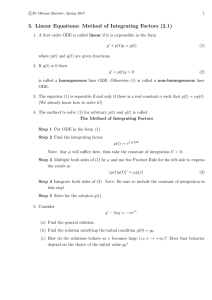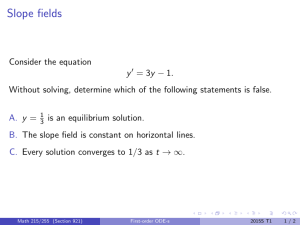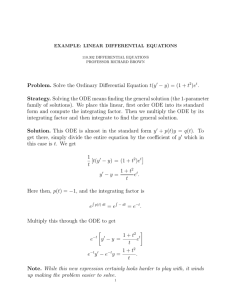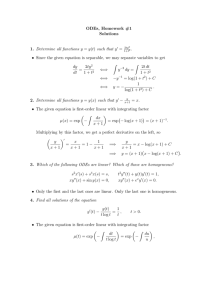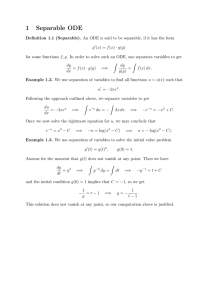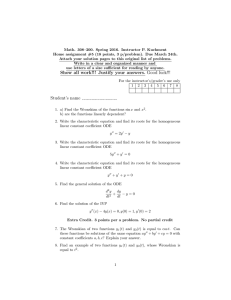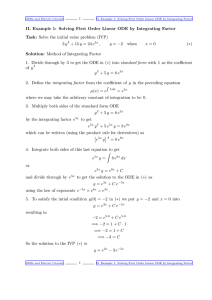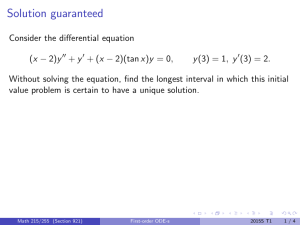2 First-order linear ODE
advertisement
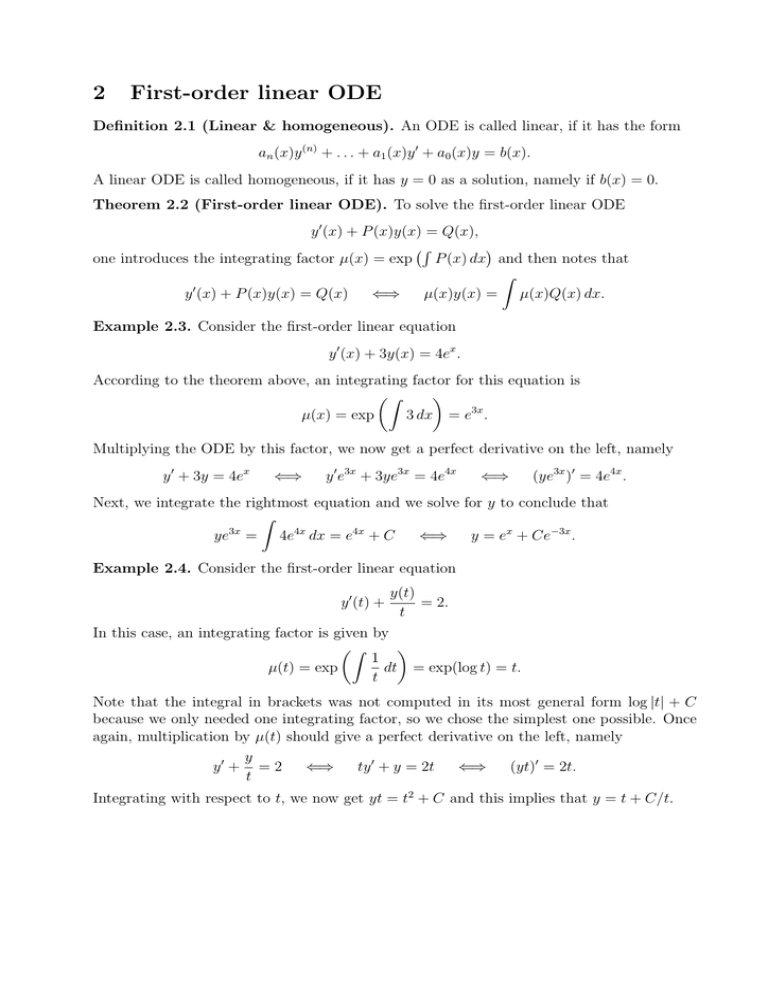
2 First-order linear ODE Definition 2.1 (Linear & homogeneous). An ODE is called linear, if it has the form an (x)y (n) + . . . + a1 (x)y 0 + a0 (x)y = b(x). A linear ODE is called homogeneous, if it has y = 0 as a solution, namely if b(x) = 0. Theorem 2.2 (First-order linear ODE). To solve the first-order linear ODE y 0 (x) + P (x)y(x) = Q(x), ¡R ¢ one introduces the integrating factor µ(x) = exp P (x) dx and then notes that Z 0 y (x) + P (x)y(x) = Q(x) ⇐⇒ µ(x)y(x) = µ(x)Q(x) dx. Example 2.3. Consider the first-order linear equation y 0 (x) + 3y(x) = 4ex . According to the theorem above, an integrating factor for this equation is ¶ µZ 3 dx = e3x . µ(x) = exp Multiplying the ODE by this factor, we now get a perfect derivative on the left, namely y 0 + 3y = 4ex ⇐⇒ y 0 e3x + 3ye3x = 4e4x ⇐⇒ (ye3x )0 = 4e4x . Next, we integrate the rightmost equation and we solve for y to conclude that Z 3x ye = 4e4x dx = e4x + C ⇐⇒ y = ex + Ce−3x . Example 2.4. Consider the first-order linear equation y 0 (t) + y(t) = 2. t In this case, an integrating factor is given by µZ ¶ 1 µ(t) = exp dt = exp(log t) = t. t Note that the integral in brackets was not computed in its most general form log |t| + C because we only needed one integrating factor, so we chose the simplest one possible. Once again, multiplication by µ(t) should give a perfect derivative on the left, namely y y0 + = 2 ⇐⇒ ty 0 + y = 2t ⇐⇒ (yt)0 = 2t. t Integrating with respect to t, we now get yt = t2 + C and this implies that y = t + C/t.
